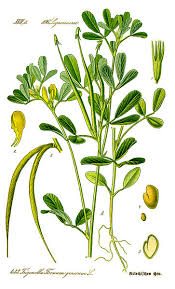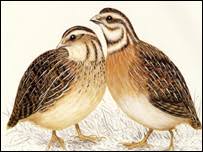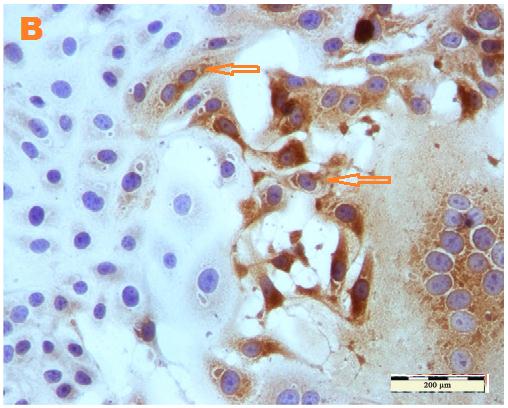|
Utilization of Fenugreek (Trigonella Foenum-Graecum) as Growth Promoter for Broiler Chickens

|
Original Article, B5
Alloui N., Ben Aksa S., Alloui M.N., Ibrir F.
J. World's Poult. Res. 2(2): 25-27., 2012.
ABSTRACT: The aim of the experiment was to compare the production performance of broiler chickens when fed a conventional standard feed and the same feed supplemented with Fenugreek seeds. One hundred and twenty (120) a-day old male broiler chicks of the strain ISA-15, were divided into 2 equal groups; a control group (A) and an experimental group (B), with six replicates of 10 chicks each per group (6×10) in a completely randomized design. The control group received a classic feed based on maize and soybean meal and the experimental group was fed with the same control feed without antibiotic and coccidiostatic and supplemented with Fenugreek seeds at (3g/kg of feed). Fenugreek seeds supplementation significantly (p0.05) for the slaughters parameters (dressing percentage, carcass length) and mortality.
Keywords: Broiler chickens, Feed additive, Fenugreek and Growth promoter
|

|
|
Effect of Non Genetic Factors on Growth Traits in Short Term Selection for Different Ages in Japanese Quail

|
Original Research, B6
Ashok A., Prabakaran. R.
J. World's Poult. Res. 2(2): 28-32. 2012.
ABSTRACT: Meat type Japanese quail were subjected to three different methods of individual phenotypic selection viz., high two week body weight, four week body weight and high four week body weight coupled with low relative body weight gain between 4-6 weeks of age for three generations. The lines, generations, sexes and hatches had significant (P0), the least squares means of body weights at hatch,1,2,3,4,5 and six weeks of age were 8.31±0.04, 38.53±0.29, 82.72±0.60, 120.13±0.74, 148.34 ±0.85, 173.15±0.89 and 191.15±1.04 g, respectively. The corresponding means were 8.04±0.04, 38.84±0.30, 77.51±0.61, 110.71±0.75, 144.77±0.86, 170.27±0.90 and 190.81±1.06 g in first generation (S1); 8.93±0.04, 41.41±0.28, 78.81±0.58, 128.68±0.71, 165.83±0.82, 184.27±0.86 and 202.84 g in second generation (S2) and 8.42 ± 0.04, 39.73±0.26, 78.17±0.53, 123.86±0.65, 160.75±0.76, 183.53±0.79 and 202.59±0.93 g, in third generation (S3). The least squares means of body weights of males at hatch, 1, 2,3,4,5 and 6 weeks of age were 8.41±0.04, 39.32±0.26, 78.47±0.54, 118.72±0.66, 150.81±0.76, 169.87 ± 0.80 and 183.42±0.94 g, respectively and in females in the same were 8.44±0.04, 39.94±0.26, 80.14±0.52, 122.97±0.65, 159.04±0.75, 185.73±0.78 and 210.28±0.92 g, respectively.
Key Words: Japanese quail- selection- body weights-non-genetic factors
|

|
|
Replication of Infectious Bronchitis Virus in the Chicken Mesenchymal Stem Cells

|
Original Article, B7
Mohammed MH, Hair-Bejo M, Omar AR, Hasoon MF, Alazawy A, Abdul Ahad EA and Aini I.
J. World's Poult. Res. 2(2): 33-36., 2012.
ABSTRACT: The susceptibility of the chicken mesenchymal stem cells to infectious bronchitis virus was characterized after twenty consecutive passages in chicken mesenchymal stemm cells. Virus replication was monitored by cytopathic observation, indirect immunoperoxidase, and reverse transcription polymerase chain reaction. At 72 h post-infection (p.i.) in third passage, the cytopathic effect was characterized by rounding up of cell, monolayer detachment, intracytoplasmic brownish colouration was readily observed by from 24h p.i in third passage, and at all times the extracted viral RNA from IBV-infected monolayers was demonstrated by reverse transcription polymerase chain reaction. Tissue culture effective dose50 was used to measure virus titration performed on chicken mesenchymal stem cells and the titres in twenty passages was 108.6 TID50/ml. The results obtained in this study suggested that the chicken mesenhymal stem cells can be used for adaptation IBV and may be considered a step forward for the use of these cells in the future for IBV vaccine production.
Keywords: Infectious bronchitis disease virus, S1 gene, chicken mesenchymal stem cell
|

|
|
 Evaluation of Size and Lesion Scores of Bursa Cloacae in Broiler Flocks in Algeria
|
Original Article, B8
Sellaoui S, Alloui N, Mehenaoui S. and Djaaba S.
J. World's Poult. Res. 2(2): 37-39., 2012.
ABSTRACT: The outbreaks of IBD (infectious bursal disease) are frequently observed among correctly vaccinated broiler flocks in Algerian Nord-East region. The present study aimed to search for the immunosuppression state as possible consequence of IBD. Our investigation focused on nine broilers flocks whom one suffering from IBD. Total of 400 bursa cloacae (bursa Fabricius) were collected from broiler chickens during the rearing period or at slaughtering. The parameters of the bursa cloacae are evaluated: body weight ratio, index bursal, morphometric characteristics and the histopathological observations. The results obtained show that the weight and diameter of bursa Fabricius are not proportional to the age and weight of chickens. The weight and size of the bursa Fabricius were found lower than the accepted standards. According to the evaluation system in effect, 58 % of examined chickens belong to the poor category and 29 % to the excellent category. Such results indicate bursa atrophy and confirm state of immunosuppression which was suspected because of poor performances recorded in some broiler flocks. In conclusion, the bursa characteristics (body weight ratio, morphometric and histopathological studies) are practical and not expensive tools for any field investigation to evaluate the immune status of broilers
Keywords: Algeria, bursa of Fabricius, chicken, lesion score.
|

|